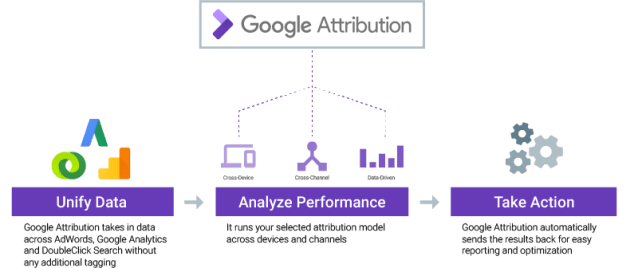Sure, Google etc know how to target-market you. Looking at women’s clogs on Zappos, are we? Presto! Slashdot is now serving up ads for Dansko nurses’ footwear!
But how can Google convince its marketing clients that their investments are turning into sweet payola? It’s not like the search behemoth is following us around, jotting down what we buy with our credit cards, right? It’s not as if it first serves us ads, then notes what we buy, right?
Well, maybe it hasn’t so far, but get ready for that to change.
On Tuesday in San Francisco, at Google’s annual Marketing Next conference, where it unleashes its latest tools for ads, analytics and DoubleClick, the company announced that it’s ready to answer the question that’s been bugging marketers for ages: “Is my marketing working?”
To deliver the answer, it will be training a machine learning tool called Google Attribution on our buying activity. It’s now in beta and will roll out to more advertisers over the coming months.
As Google’s schematic shows, the artificial intelligence (AI) marketing analytics tool will be following us across devices and channels – mobile, desktop, and probably while we’re scuba diving or trying to shop while we’re hiding in a cave, once Google figures those ones out – to see what we’re buying and match it up with what ads we’ve seen. It will then automatically tell marketers what we’re up to.

The AI piece of the puzzle will be “data-driven attribution” – ie the determination of how much credit to assign to “each step in the consumer journey”. When did you first “engage” with those Dansko clogs or whatever other fill-in-the-blank brand you’ve been looking at? What else did you do after that ad, leading up to that final click to purchase?
Then, the tool mulls over your online meanderings in the time between when you looked at the brand and when you bought something – or, yikes! didn’t. If you decided that clogs are actually pretty ugly, how does your meandering compare with that of somebody who did in fact buy them?
In marketing speak, that’s analyzing an account’s conversion patterns.
Google Attribution integrates with ads tools like AdWords and DoubleClick Search.
If you don’t like the idea of Google knowing what you buy, you might be consoled by Google’s reassurance that, according to Consumerist, the company’s planning to anonymize the data and then hash it over. From Consumerist:
The data won’t have your name attached, Google makes sure to point out. It’s anonymized and then hashed over, so what advertisers see is that user 08a862b091c379fe9767615d10873 saw these 10 \ads in the morning, and spent $27.73 at a certain grocery store that afternoon.
Sure, “anonymizing” our data might console some of us. It shouldn’t, though. Just because data is anonymized doesn’t mean it can’t be used to track us. As both AOL and researchers have shown, making data truly anonymous is hard.
If you want to check out what Google already knows about you, it introduced a tool called My Activity last July to let you see.
Depending on which of its tools we use, Google knows what we think, what we need, what we desire, our political and spiritual beliefs, our age, our gender, what music we listen to, what we watch, what we read, where we’ve been, where we plan to go, where we work, where we hang out, where we live, who we meet, where we shop, when we shop, what we buy, how much money we’re worth, how much we spend, and how much energy we consume.
How does it amass all that data? Through Google search, the Chrome browser, Gmail, Google News, Google+, Book Search, YouTube, Picasa, Translation, Maps, Street Views, Waze, Nest, and… well, the list keeps going, and growing, as Google acquires more companies and more data-crunching ability.
As Consumerist notes, studies have shown that it only takes three pieces of data to identify you by credit card spending alone, or two to identify you from a social media app.
Google says it now has access to 70% of all credit/debit card transactions in the US.
Of course, you can always opt out of Google logging some of your activity, and you can tell it to stop showing you some ads. But all that information is still out there, Consumerist notes, tied to your credit card spending.
Good luck trying to rub out that trail!
